When the rain started, it didn’t stop for the rest of the two plus weeks I was there. Rainy season in India is nothing to scoff at, there were numerous times when I couldn’t sleep at night because I was afraid that the roof would blow off! It was nonstop for about a week, and then started to go into a three day cycle. There were three days of nonstop rain, followed by a morning of sunshine, then back into the rain. As a result, there was very inconsistent power, and of course I forgot to bring a flashlight. So going outside to use the bathroom in the middle of the night was more of an ordeal than it should be. Since the rain refused to stop, our clothes also refused to dry. By the end of the last week, everyone was walking around with moldy, stinky clothes and most had just given up the attempt to clean their clothes. The great thing about rainy season is that within the two weeks that the rain started, everything started to grow like crazy and the landscape changed dramatically.
Here is a photo of people in the field across the road from the ashram picking rice. Notice how the palm tree is having a hard time staying upright. This was a mild day.
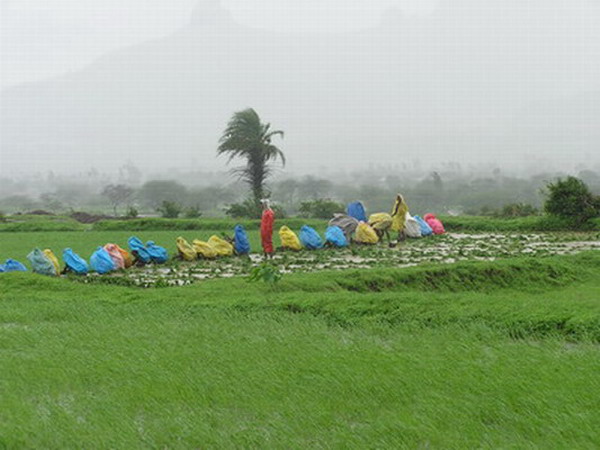
Here are some pictures of the same landscape that was dry and brown just a week prior.
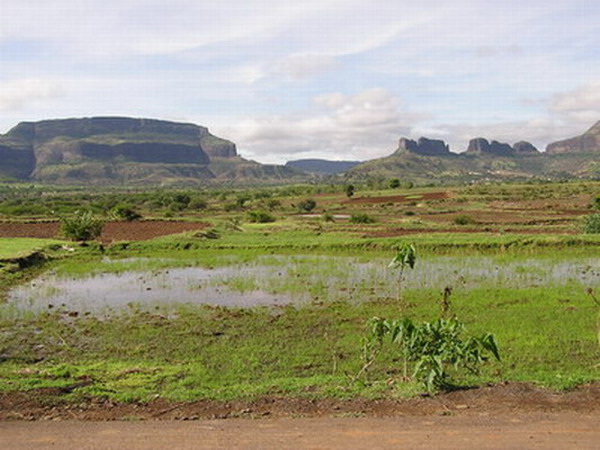
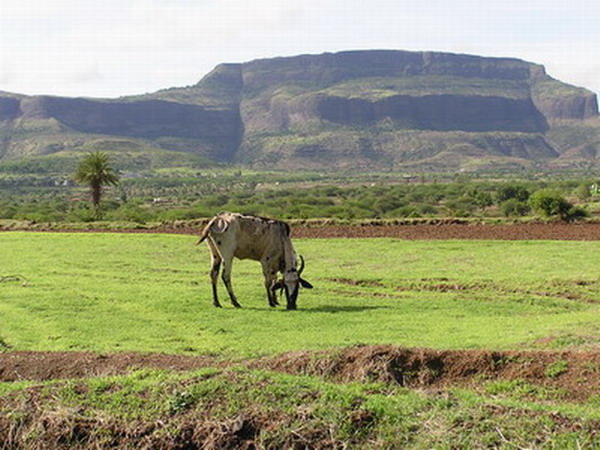
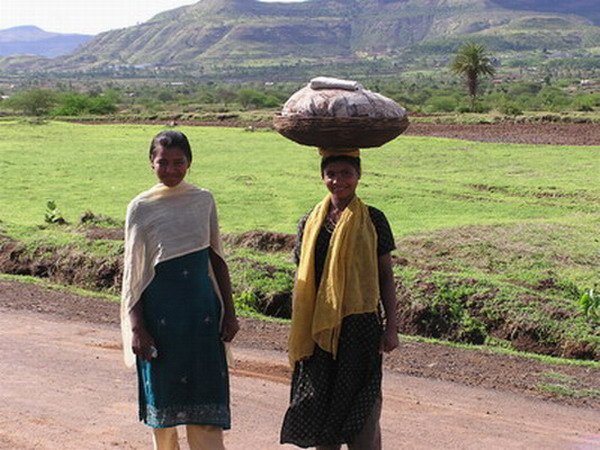
These are some women from the local village who were making use of the abundant rain water by washing their clothes in the puddles on the street.
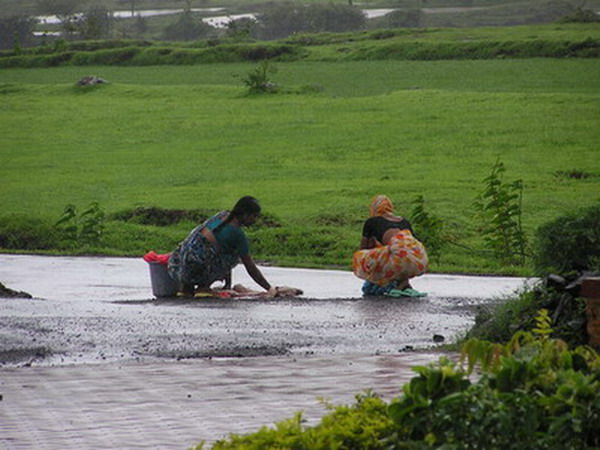
When people go through a rough situation it tends to bring them closer faster and this was the case at the ashram. Here are some of my new friends.


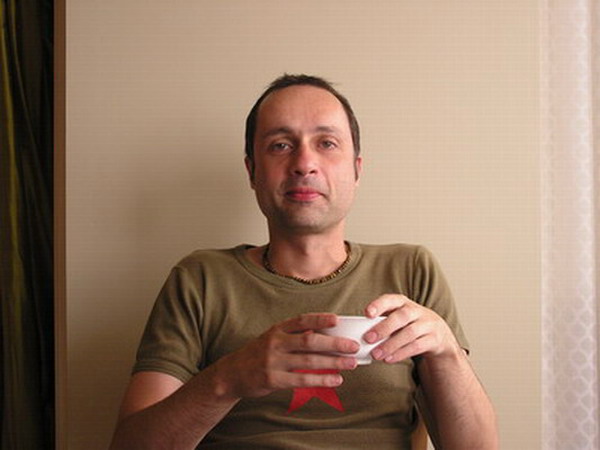

Considering the fact that there were 4 women sharing the same room for a month, I think we got along quite well. These are my awesome roommates.
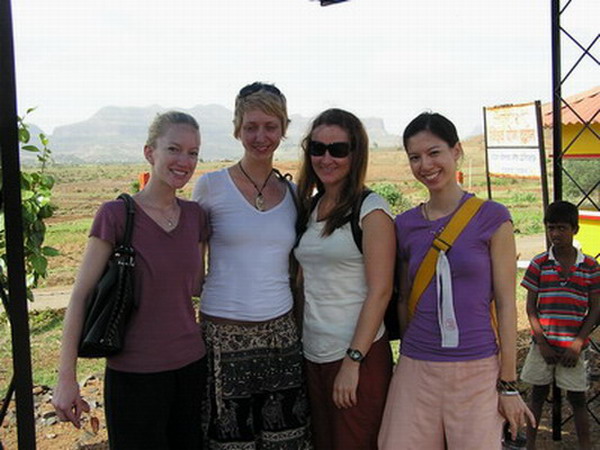
This is a view of the inside of our room.
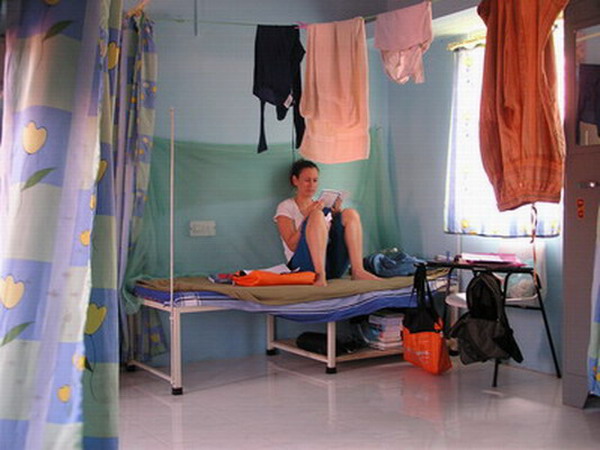
Below, you can see I took pictures of typical meals at the ashram to give you a better idea of the whole Ashram experience. The food was a sattvic diet, which is the traditional yogic diet. It is meant to not over stimulate the senses. Thus there was no garlic, onions, nor too many spices. The only real spices they seemed to use were turmeric (and lots of it), mustard seed, lots of salt, and cilantro. These few spices are great, but when used for every meal, three times a day, for an entire month, they get to be a bit much. As a matter of comparison, when I finally ate outside of the ashram (after 3 weeks of this strict diet), I ate garlic naan (garlic flat bread), as well as numerous other spices. Consequently, I felt more energetic with better mental capacity than I had in weeks. Regardless of whether it actually made a difference or not, if I never see another potato curry for the rest of my life, that will be fine with me.
Breakfast:
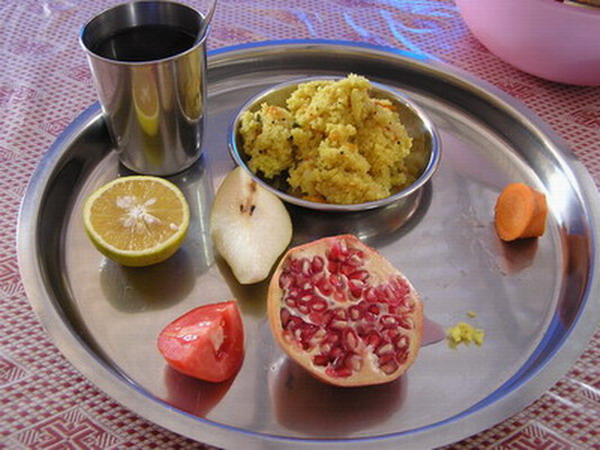
Lunch:
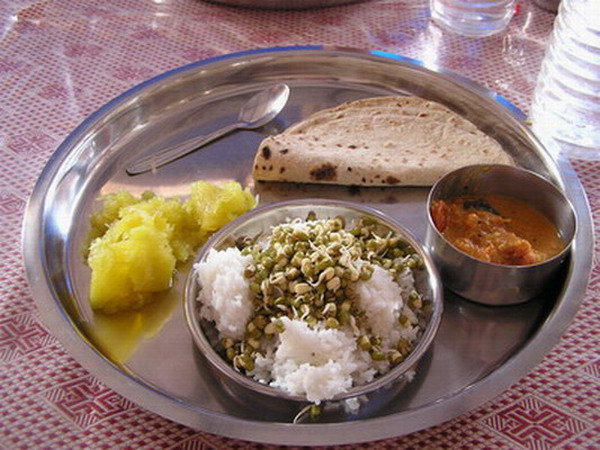
Dinner:
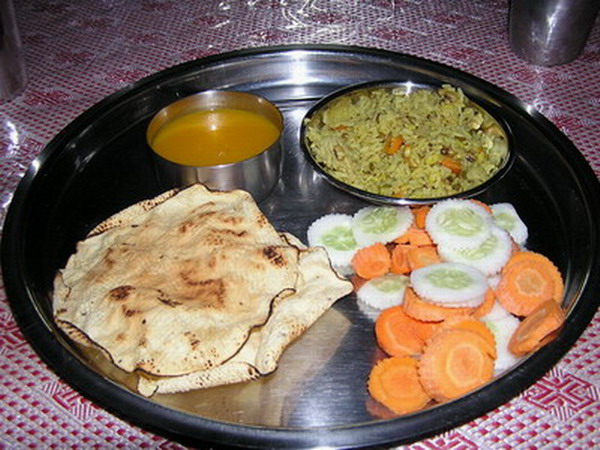
There were numerous cleansing processes that we learned while at the ashram. One is the neti pot. This is where you insert a sort of tea pot with a long spout, filled with salt water, into one nostril. The water goes through your nasal cavity, cleaning it out, and comes out on the other side. Surprisingly, we were actually graded on this process and how constant the stream of water was coming out the nostril!
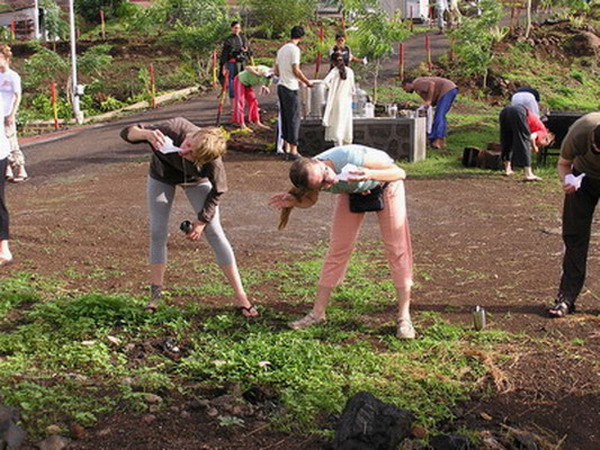
Another cleansing process involved drinking 4-6 glasses of salted warm water, and then vomiting it back up. Sounds like fun, huh? This is done to clean out the mucus that accumulates in your stomach and esophagus. It was one of the more unusual practices that they did at the ashram. I wanted to have the original yoga taught to me, right? Well, here is example of how you should be careful what you ask for. This is one of the many cleansing processes talked about in Hatha Yoga. So, I joined my fellow classmates in drinking saltwater, but only made it to 2 glasses before I couldn’t handle it anymore. This “cleansing” process was definitely an interesting experience that I will not easily forget.
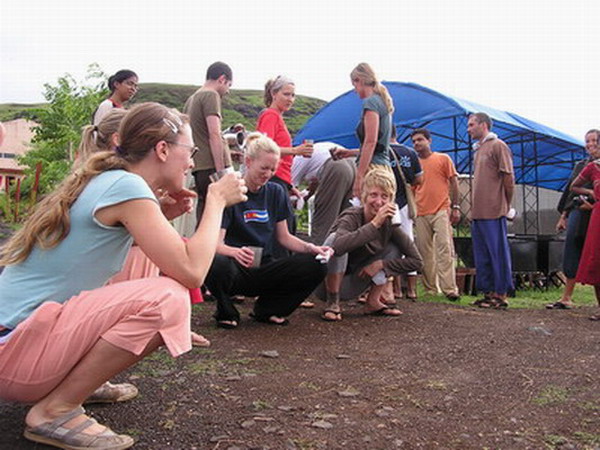
Here is my friend, Katie, trying to get the salt water back up. Sorry to any of you who have a weak stomach.
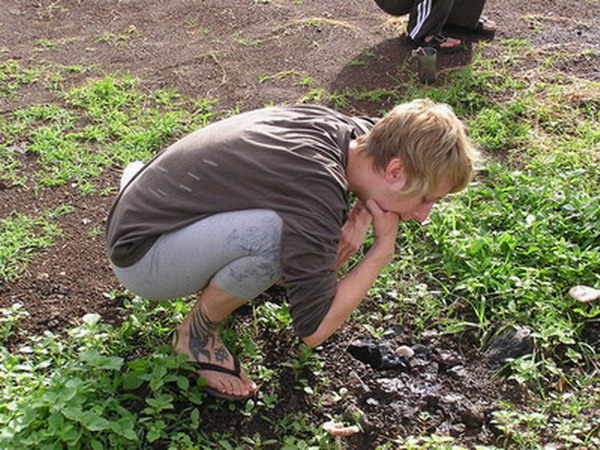
Another advanced cleansing process, which I did not do, involves sticking a tube through your nostril and then pushing it in until it comes out through your mouth. This process is demonstrated here by one of the advanced students.
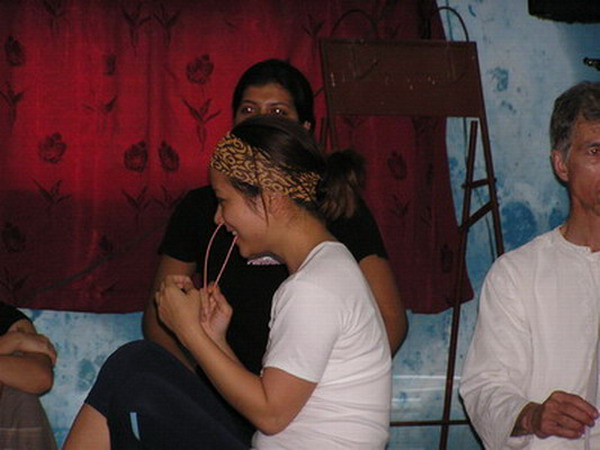
Yoga gymnasts.
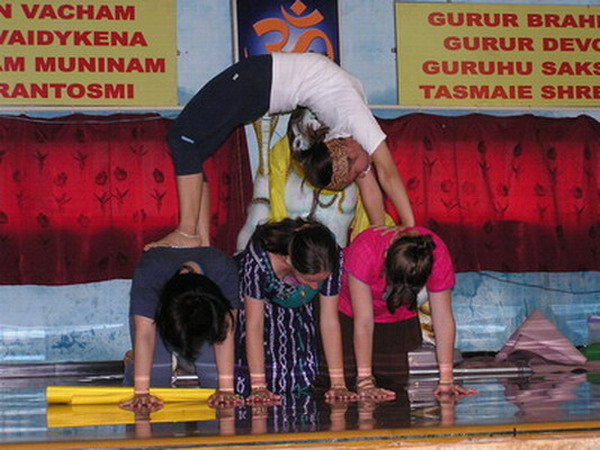
This is the guru of the ashram, Guruji. He, his wife, and son all wore the typical saffron colored robes at all times. This indicates their high status and understanding of yoga.
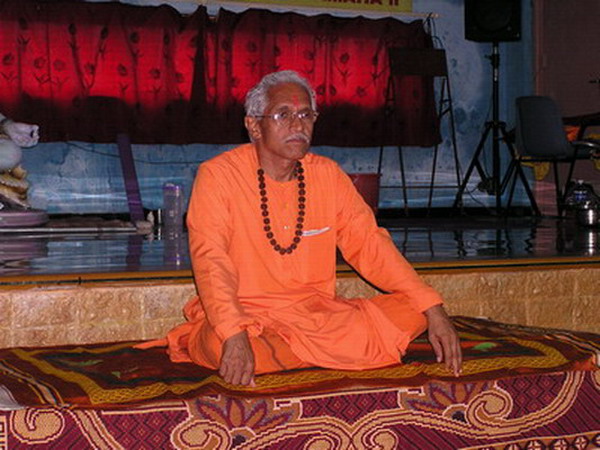
This is his wife, whom we all called Mama Guruji because we couldn’t remember her real name. She has an amazing singing voice and here she is singing the opening prayer for us.
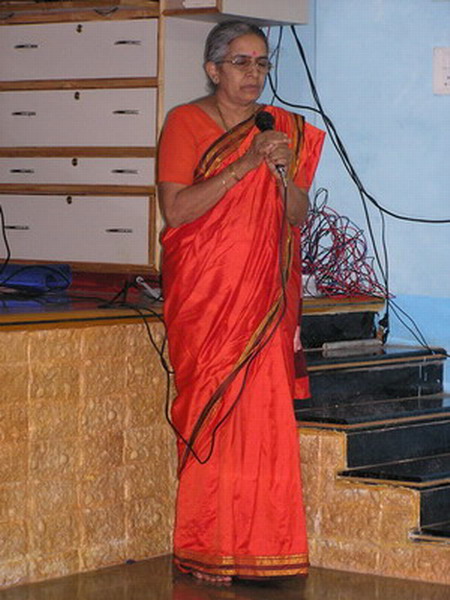
Here is Gandharji standing next to me. Strangely enough, after a month of not eating much and losing more weight than I ever imagined I would, he still makes me look big.
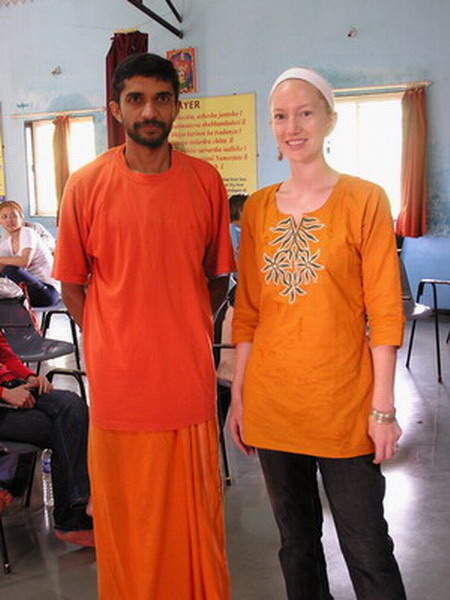
This is the person, Ananji, who ran the shop where we could by most of the items that one might need while at the ashram, soap, t-shirts, books, cookies, what have you. He was always smiling like he knew something we didn’t. I wonder what it was?
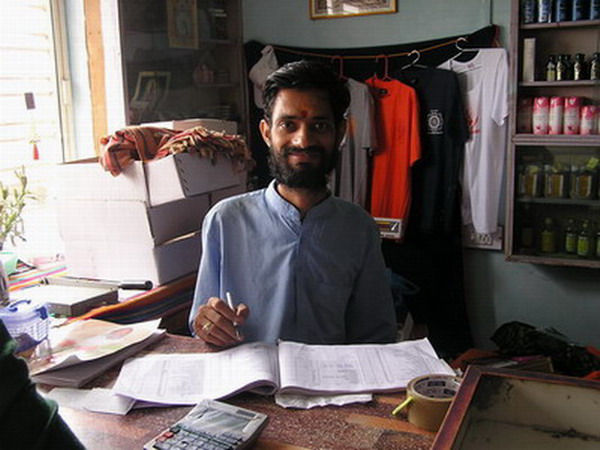
This is a photo of the statue of Lord Shiva that sat in the front of the yoga hall. Every morning we would chant for about a half hour and most of those mantras that we chanted were to Lord Shiva. It was a bit disconcerting to me that we were worshiping a figure with blue skin and looked like a transvestite, so I stopped going to these chanting sessions in the end (plus, I wasn’t looking for a new religion). Shiva is one of the three gods in the Hindu religion, along with Brahma and Vishnu. I didn’t want to be disrespectful to the Hindu religion by not attending chanting or making fun of Shiva, but come on … a blue transvestite??
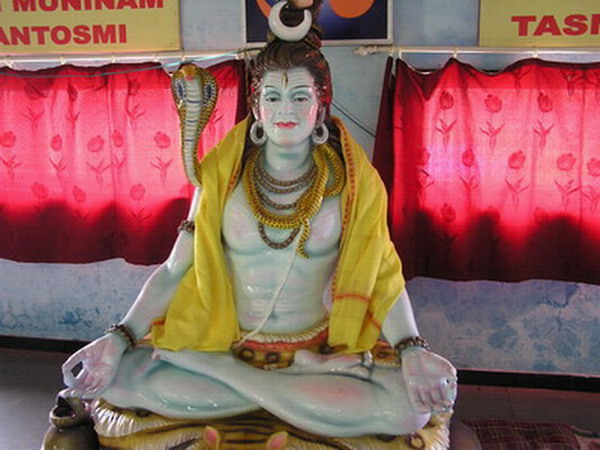
On the last weekly day off I decided to go to another town nearby, Trimbuk, which holds one of the twelve most holy temples in all of India. Unfortunately cameras are not allowed into the temple walls, nor are non-Hindu people, usually. But, this temple allowed me and my friends inside, sans cameras. I managed to get a shot of it from the outside.
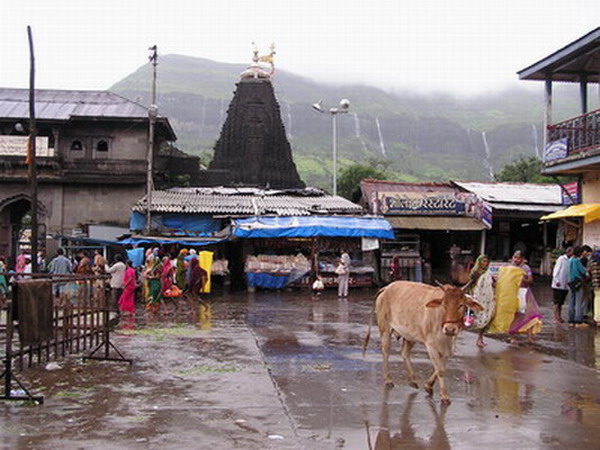
Some of the local people.
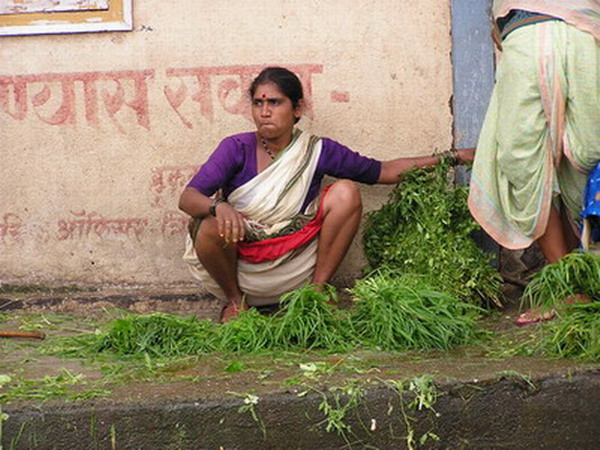
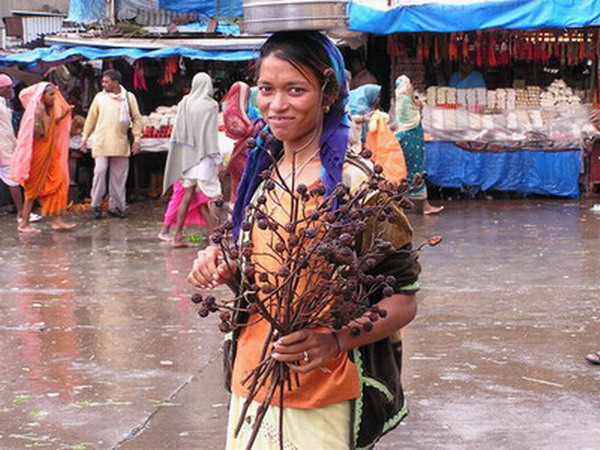
On the very last day there was a talent show held at night. Here are the announcers of the evening, Jeff, Katie, and Chris, showing off their OM chanting skills in their new “Supermantra” t-shirts.
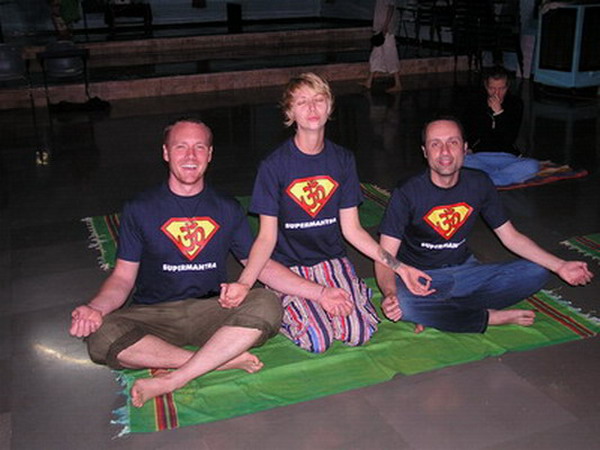
When the month was finally over, some friends and I decided to stay at the Taj Mahal Palace in Mumbai for a night, just to enjoy some opulence as a contrast to the basic living we had been doing for the past month.
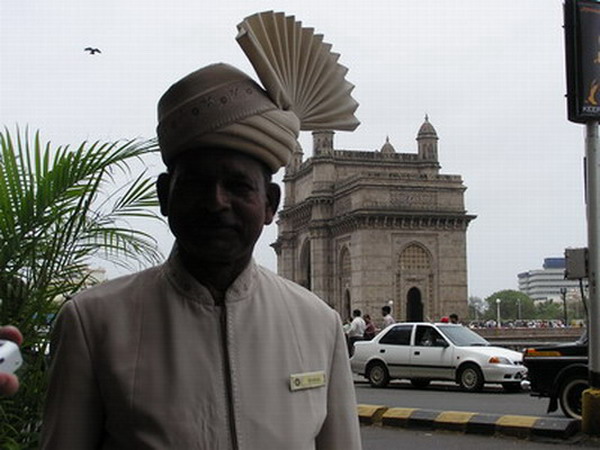
The Taj Mahal Palace is one of the nicest, if not the nicest, hotels in India. The price is insanely high, but it was worth it. This is the view of the Gateway of India taken from our hotel window. The Gateway of India is the most widely recognized landmark of Mumbai, built in 1911 to welcome King George V and Queen Mary to Mumbai. This gateway is traditionally the first thing that people see when arriving by ship via the Arabian Sea to Mumbai. It is also located in the nicest areas of Mumbai, Colaba. So a night at the Taj served to balance us out with the extreme opposite to ashram living. Then we were ready to continue normal life.

On my last day in India I decided to get a henna tattoo. This was an interesting experience and I thoroughly enjoyed getting a henna tattoo. It was much more pleasant than an ink tattoo. No pain required! Traditionally henna tattoos are applied on women’s hands for their wedding days or for a special occasion. Henna is applied like icing put on a cake. It comes in a cone, and the tip of the cone is cut off. The person applying the henna proceeds to draw on your hands with the henna icing. There are stencils available, but the person who did mine did it freestyle and was finished with both hands within a half hour. It was amazing to watch. There is so much skill and precision involved. Then I had to sit with my hands up in the air and not touch anything for at least an hour, which you can imagine was quite difficult. Amazingly, I succeeded in not smudging the henna, and this is the result:
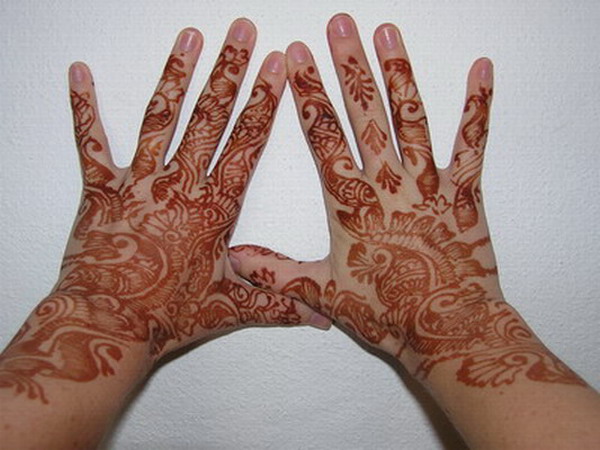
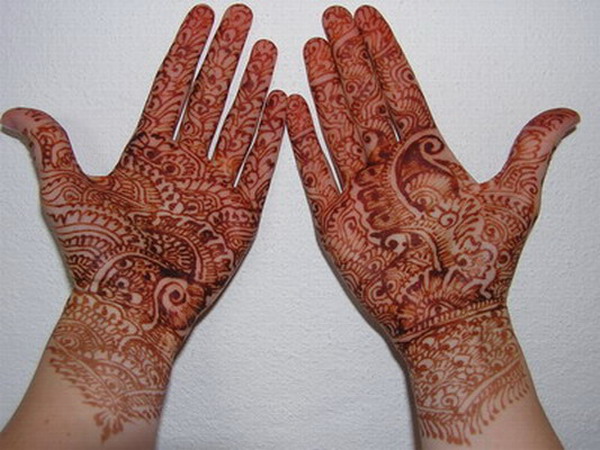
For my last photo I will leave you with a simple impression that is so very India.
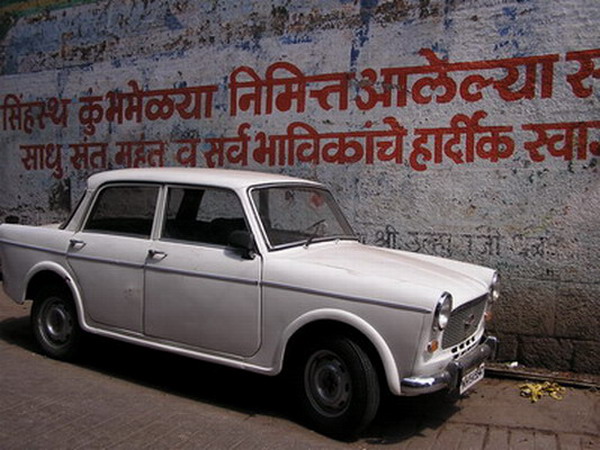
I learned so much while I was India that I hope never to forget. One such lesson is that we in the west, and America especially, live a very blessed life. We eat every day as much as we want, have shelter over our heads, have running, hot water showers, and have the ability to reach all of our goals by hard work and determination. In India, this Horatio Alger dream is not there. There is such an acceptance of social class structure (read: caste system) that there is no way out of the social class that you were born into. It is just accepted. Being a female in India is similarly difficult, and it really made me appreciate the giant steps forward that our western society has made through the sacrifices of our mothers and mothers’ mothers for our sake. I knew this information before I went to India, but to see the way that people live and the way that certain people are treated, it really hit home that I am incredibly blessed. It made me truly grateful for what I do have and made me more at peace with what I don’t have (which, admittedly, isn’t much). I have seen poverty and desperation before, but nothing compared to India. It drove home the idea that I really should be grateful for what I have right now, more than any other place I have visited before.
The ashram itself gave me a lot of new experiences that I can honestly say I will never have again. For example, the stomach cleansing process was one I hope to never repeat in my life, but now I can say I have done it. This kind of group experience, vomiting together, made us all a very cohesive yoga team and I have made some great friends that I hope I will keep in touch with. When you go through tough times with people it certainly makes you bond a lot quicker and longer. My thoughts of the ashram will forever be linked with the friends I made there to a greater extent than the actual yoga.
Interestingly, the more I learn about various religions, the more I realize at the core, all religions want to achieve the same thing. They just use different methods and terminology to get to that same “place of higher understanding.” Truly when it comes down to it, we are all so incredibly similar and the differences that keep us feeling so separated from others are all just a matter of semantics. When I realized this in India, it was a lot easier to communicate with people and feel safer in a country that before seemed so aggressive and unwelcoming. It led me to much better interactions with people. I stopped expecting misunderstanding, even though it seemed there was a vast cultural gap between us.
I will treasure my experience in India forever, and I thank you for reliving my journey with me.
Hari Om,
Anna
Skip to content
Our Family Story.
